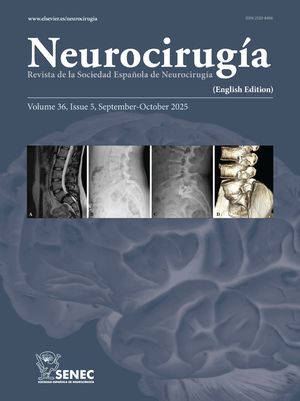Se recoge la experiencia de los autores en la evaluación anatomoclínica de 15 pacientes con siringomielia idiopática, asociada a una malformación de Chiari tipo I, y tratados quirúrgicamente mediante una derivación subaracnoidea (SSS). En todos los casos, el SSS logró una reducción notable y permanente de la cavidad intramedular y según una valoración subjetiva de los propios pacientes, el 80% de ellos refirió una clara mejoría o estabilización de síntomas, tras un período de seguimiento comprendido entre 2 y 5 años. La experiencia obtenida con la presente serie sugiere que el SSS es una técnica quirúrgica sencilla y recomendable en pacientes con siringomielia en los que que se aprecie un quiste intramedular ancho, y en los que no existan manifestaciones clínicas atribuibles a una malformación de Chiari asociada. Por otra parte, cuando sé correlacionaron, a partir de los datos preoperatorios, las diferentes dimensiones de los quistes siringomiélicos y los síntomas predominantes, no se obtuvo ninguna relación estadísticamente significativa, lo que debe ser tenido en cuenta a la hora de plantear una indicación quirúrgica en pacientes con esta enfermedad.
The anatomoclinical experience with a series of 15 patients with syringomyelia-Chiari complex, and treated by syringosubarachnoid shunt (SSS) is presented. All patients showed postoperative deflation of the syrinx at follow-up magnetic resonance imaging evaluation, 80% of the patients showed stabilization or improvement after operation. The present experience suggests that SSS is a safe technique for syringomyelic patients with wide syrinxes, when symptoms of posteriorfossa compression were absent. On the other hand, the present study suggests that the evaluation of syrinx dimensions cannot be brought into relation with the nature or distribution of clinical symptomatology. This finding should be born in mind when a surgical treatment is offered to syringomyelic patients.
Article

If it is the first time you have accessed you can obtain your credentials by contacting Elsevier Spain in suscripciones@elsevier.com or by calling our Customer Service at902 88 87 40 if you are calling from Spain or at +34 932 418 800 (from 9 to 18h., GMT + 1) if you are calling outside of Spain.
If you already have your login data, please click here .
If you have forgotten your password you can you can recover it by clicking here and selecting the option ¿I have forgotten my password¿.






